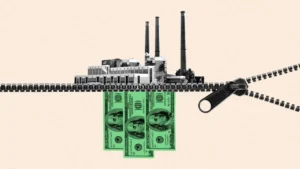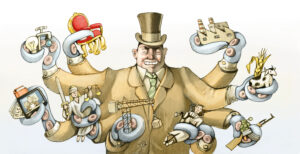Are We Heading for Another Stock Market Crash?
“The signs are ominous,” writes financial journalist Suzanne McGee. Ultimately, we "will need to get accustomed to higher market volatility, of the kind that we saw yesterday." Chris van Dyck / CC BY 2.0
Chris van Dyck / CC BY 2.0
“The signs are ominous,” writes financial journalist Suzanne McGee at The Guardian. Ultimately, we “will need to get accustomed to higher market volatility, of the kind that we saw yesterday.”
“The New York stock exchange – the world’s largest stock market – shut down for three and a half hours due to a mysterious ‘technical issue’ on Wednesday; China’s speculative stock market plunged still further, despite tens of billions of dollars of spending on the part of the government in a futile attempt to halt the carnage; Greece is sailing into uncharted territory and teetering on the brink of leaving the Eurozone; and meanwhile Puerto Rico is mired in its own debt crisis.”
According to Howard Silverblatt, senior index analyst for S&P Dow Jones Indices, with only an hour to go before the bell rang to signal the start of trading on the floor of the NYSE, the 1.03% decline in the price of futures contracts on the Standard & Poor’s 500 stock index – the market bellwether – was the biggest since the autumn of 2008, in the midst of the financial crisis.
By the time the day of market horror finally ended, trading had at least resumed on the NYSE, with exchange officials quickly quashing speculation of a cyber-attack. But if you’re looking at your 401k or other investment account statements in the coming days, you may want to brace yourself for a shock: the S&P 500 index tumbled 1.65% to 2,046.91, while the Dow Jones Industrial Average fell 1.46% to 17,517.76. Most traders reported seeing a sea of red on their screens, and each of the 10 sectors in the S&P 500, from financial stocks and retailers to mining companies, participated in the selloff.
If you’re unnerved by what you’ve already witnessed, you may want to prepare yourself for another go on the Dow Jones Terror Ride. “It’s time to take a deep breath and prepare for more volatility,” says Russ Koesterich, global chief investment strategist at BlackRock, the giant asset management firm. “Every client I meet is wondering whether these events – China, Puerto Rico, Greece – are the first cracks in the edifice like those we saw in 2007, but they aren’t that existential. We just aren’t used to this kind of volatility, so they are going to feel very, very dramatic, and be very serious with respect to the countries concerned.”
Translation: investors in US stocks have been too smug for too long. True, the bull market that began back in early 2009 has encountered some big headwinds along the way. When Europe’s debt crisis first flared up, US markets stalled; our own squabbles over whether to raise the debt ceiling had a similar impact. Early last year, biotechnology and some darlings of the technology stock universe were caught in a selloff when the market felt share prices had outstripped fundamentals, like the rate at which profits (if any!) and sales were growing.
Continue reading here.
— Posted by Alexander Reed Kelly.
Your support matters…Independent journalism is under threat and overshadowed by heavily funded mainstream media.
You can help level the playing field. Become a member.
Your tax-deductible contribution keeps us digging beneath the headlines to give you thought-provoking, investigative reporting and analysis that unearths what's really happening- without compromise.
Give today to support our courageous, independent journalists.






You need to be a supporter to comment.
There are currently no responses to this article.
Be the first to respond.